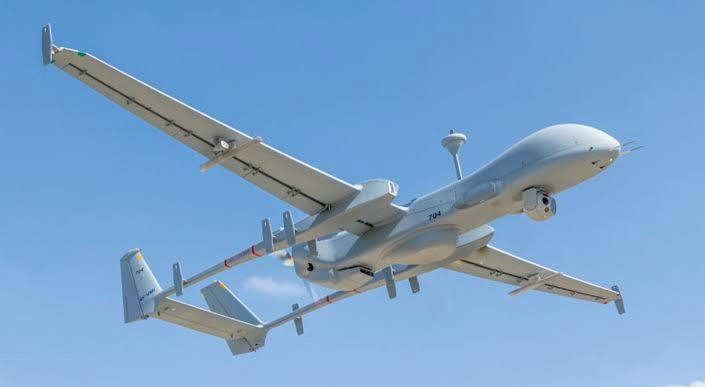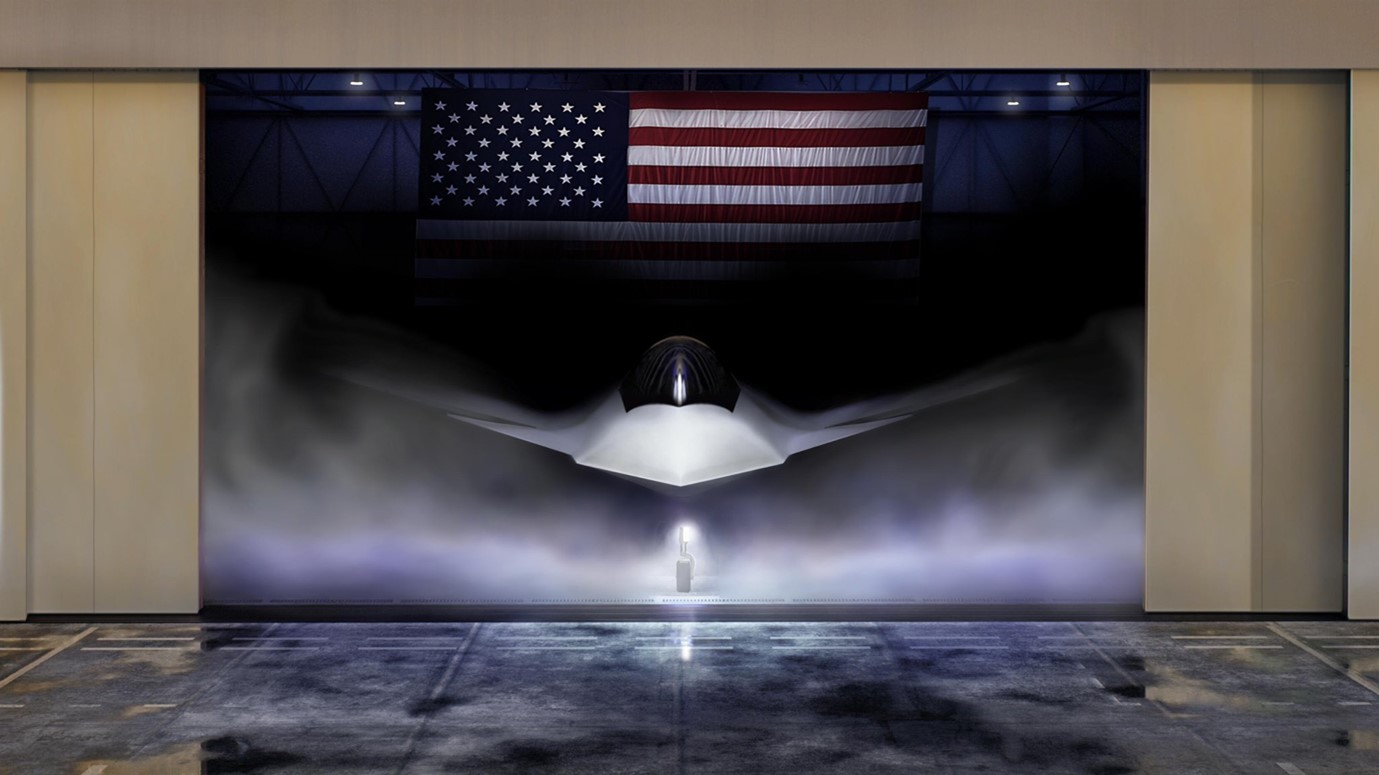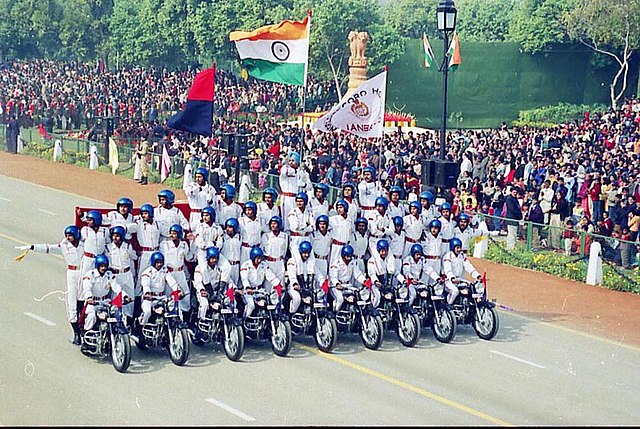
INDIA’s PREPAREDNESS FOR DRONE WARFARE

Drone is an umbrella term used to refer to an aircraft that is operated without a human pilot on board. Drones can be remotely controlled by human operators or can fly autonomously based on pre-programmed instructions or a combination of both. These devices can vary widely in size, design, and functionality, and they have diverse applications in various fields including the military. Drones include what is referred to in the military terms as both Remotely Piloted Aircraft (RPA) and Unmanned Aerial Vehicles (UAV).
Drones first appeared in the military by the end of WWI and were primarily used for reconnaissance. Initially, they were found to be expensive and with limited capabilities. In the early 2000s, Drones became viable for military use due to technologies related to miniaturisation, enhanced computing power, artificial intelligence, and satellite networks. Over the years, drones have become a cutting-edge tool and have established themselves as an essential part of warfare. Drone warfare has become increasingly prevalent in modern military operations due to advancements in technology and the unique capabilities that they offer. They have played an important role in counter-terrorism operations by the United States in Pakistan and Afghanistan, a decisive role in the armed conflict between Armenia and Azerbaijan, and are also being used extensively by both sides in the Ukraine–Russia conflict.
Drones of various sizes and capabilities are taking over the tasks of conventional platforms. Their utilisation is spread across the entire spectrum of threats ranging from sub-conventional, and conventional to long-range stand-off attacks. Investment in anti-drone systems is also a need of the hour. While several countries possess drones, few produce them domestically. Mainly USA, Russia, China, Israel, and Turkey have developed their UAVs. India first began developing its drone warfare capability by acquiring surveillance drones from Israel in the 1990s. While developing indigenous drone warfare capability is a necessity for the Indian military, there is a need for a holistic review of aspects associated with drone warfare.
Drone Threat
The drone threat for India emanates from the proliferation of drones from China, Pakistan, and non-state actors. China is a world leader in the drone production industry, and it possesses offensive drone capability (Wing Loong and Caihong combat drones). These capabilities also find their way to Pakistan. China has sold CH-4 unmanned aircraft and armed drones to Pakistan, Pakistan is also collaborating with Turkey to produce a medium-altitude, long-endurance multirole UAV system named Anka. The armed drone attack on 27 June 2021 on the Jammu airbase, and the smuggling of arms, drugs, and counterfeit currency across the border indicate conventional and nonconventional threats from Pakistan.
Drones in Indian Military
The Indian Military has been using unmanned aerial vehicles (UAVs) and drones for various purposes, including reconnaissance, surveillance, target acquisition, communication, and electronic warfare. All three services operate Israeli Searcher, and Heron for surveillance and reconnaissance missions. These medium-altitude long-endurance (MALE) UAVs are capable of providing real-time intelligence. IAF also utilises Harpy Attack Drones, which are autonomous weapons systems designed for suppressing enemy air defences. These drones can loiter over the target area and engage enemy radar systems. Harop Attack Drones, which are loitering munition systems, capable of targeting and engaging enemy assets, are also in the inventory. The Tactical Surveillance Drones provide the Indian Army with enhanced situational awareness by real-time monitoring of the battlefield, and the ability to gather critical intelligence in diverse operational environments along the border areas. The Indian Navy has also been actively exploiting the UAVs for maritime surveillance, intelligence gathering, reconnaissance, and anti-submarine warfare. Three services are in the process of procuring MQ-9B Sea Guardian Unmanned Combat Aerial Vehicles (UCAVs) for future capabilities. These advanced drones can potentially carry out both surveillance and strike missions. Other inductions include tactical ‘Sky Striker’ loitering munition, Vertical Take-Off and Landing (VTOL) aircraft, a fixed-wing hybrid UAV called Switch UAV, and more than 2200 drones of mostly smaller sizes, by the Indian Army.
Sub-Conventional Threat
The latest challenge faced by the world, due to grey zone operations in the aerial domain is the sub-conventional threat posed by aerial platforms like unmanned platforms, drones, swarms, hang gliders, powered gliders, etc. These platforms besides being used for direct targeting are also being utilised in roles like ISR, smuggling, arms trafficking, etc. In the last few years world over, concerted efforts have been made to deal with this threat. These threats need to be dealt with by the development and employment of detection systems, anti-drone weapons/systems, engagement procedures, and licensing and controlling regulations. AD operations, assets, and systems are an essential component in the entire response for mitigation of these threats. A mix of manned and unmanned operations, including unmanned swarms, will be a big challenge in the future.
Widening of AD Spectrum
In the past, AD involved protection from the conventional threat i.e. weapons launched from conventional platforms and short-range surface-to-surface missiles. With the proliferation of unmanned and other smaller platforms, sub-conventional threats have been added to the list of threats. The vital areas and vital installations need to be protected against these threats. Appropriate detection systems and weapons (like CIWS – Close-in weapon systems) are required to deal with them. On the other end of the spectrum, the ballistic missile threat has increased over the years. Ballistic missile Defence (BMD) systems with the ability to look and intercept very far are required. AD threat spectrum has widened on both sides.
Anti-drone Systems
Countering drone threats has become a significant concern due to the increasing availability and affordability of unmanned aerial vehicles (UAVs) for a variety of purposes, both benign and malicious. In the domain of sub-conventional platforms, detection and tracking are difficult because the radar, heat, visual, electromagnetic, and noise signature of these platforms is low. Hybrid systems with multiple sensors would be required to detect them. These systems would need AI to analyse and compile together the piecemeal information obtained from various sensors. Various technologies and strategies are being developed and deployed to address this threat with soft or hard kill options. Some of these include detection systems (using radar, acoustic, RF signal, optical, and thermal sensors), soft kill by Jamming and Signal Disruption (Radiofrequency and GPS), physical countermeasures (including close-in weapon systems, Anti-Drone Nets, and Directed Energy Weapons etc.), and Geofencing technology to restrict drones from flying into designated areas. All three services are in the process of procuring anti-drone systems. These include the indigenous Naval Anti-Drone System (NADS), a counter anti-drone system with a ‘hard kill’ capability, a Counter Anti-Drone System (CUAS) that uses a method to counter any hostile object through means other than a ‘hard kill’ and drone jammer guns.
Indigenous Drone Development
India has been actively involved in the development of indigenous drone technologies, driven by its strategic and defence requirements. The Defence Research and Development Organization (DRDO), along with various public and private entities, has played a significant role in advancing the country’s capabilities in unmanned aerial vehicles (UAVs) and drone technology. Several startups and companies are contributing to the innovation and production of UAVs for various applications. India is also engaged in collaborations with international partners for joint development and technology transfer in the field of drone technology. The Indian government has released crucial guidelines Drone Rules, 2022, which are expected to be key in boosting indigenous drone production for both civilian and military use. Some of the indigenous projects are: –
- Rustom Series: The Rustom series includes the Rustom-I, Rustom-II, and Rustom-H developed by the Defence Research and Development Organization (DRDO), for reconnaissance, surveillance, and intelligence gathering. Rustom-II, in particular, is a medium-altitude, long-endurance drone with advanced capabilities.
- Netra UAV: The DRDO developed the Netra UAV, specifically designed for surveillance and reconnaissance. It gained visibility during its deployment for security operations, including during major events.
- Nishant UAV: The Nishant UAV, developed by the Aeronautical Development Establishment (ADE), a DRDO laboratory, Nishant is a tactical UAV designed for intelligence gathering and reconnaissance. It is primarily used by the Indian Army.
- AURA (Autonomous Unmanned Research Aircraft): AURA is an ongoing project by DRDO to develop an unmanned combat aerial vehicle (UCAV). The drone is expected to have autonomous capabilities and may be designed for strike missions.
- Ghatak UCAV: The Ghatak UCAV is another project under development by DRDO. It is designed as a stealthy and autonomous combat drone capable of penetrating heavily defended airspace.
- Stealth Wing Flying Testbed (SWIFT): It is a technological demonstrator for the Ghatak UCAV program. The ground trials of the SWIFT prototype were started in June 2021. A naval variant of SWIFT will be used as a deck-based UCAV for the Aircraft carriers of the Indian Navy. It can also be used as a wingman drone for the IAF. It will also be used as a bomber drone for the Indian Army.
- TAPAS BH-201: Hindustan Aeronautics Limited (HAL) is working on producing airframes to conduct evaluation trials of the TAPAS BH-201 drone, which will be used for missions by the armed forces. According to HAL, 76 TAPAS drones will be inducted into the armed forces.
Indigenous Anti-Drone System Development: The Defence Research and Development Organization (DRDO) has been actively involved in developing anti-drone technologies. DRDO labs in collaboration with the private sector have been working on various counter-drone technologies and systems to detect, track, and neutralize rogue drones. These include radio frequency (RF) jammers, electronic countermeasure systems, and technologies like “Sky Fence,” which involves using a combination of RF signals and geofencing to detect and neutralize drones. DRDO has also developed the “Drona” unmanned aerial vehicle (UAV), which is designed to simulate enemy drones for testing and evaluating anti-drone systems. The Indian military and security agencies have deployed anti-drone systems {Drone Detect, Deter and Destroy System (D4S)}, at critical installations and strategic locations to safeguard against potential threats from unauthorized drone activities.
Initiatives to boost the Domestic Drone Industry: India has set two stiff but transformational goals for its UAS industry. The first is to become self-reliant in critical UAS technologies, and the second is to become a global drone hub by 2030. India’s Ministry of Civil Aviation (MoCA) has taken several policy initiatives to stimulate the domestic drone industry. Some of these are: –
- Drone Rules: These rules made the certification process easier by replacing the complex approval processes required to fly drones. It abolished several permissions and approvals, reduced the number of forms that need to be filled, and brought down drastically the types of fees to be paid. The remote pilot license requirement was done away with for the non-commercial use of micro and nano drones.
- PLI Scheme for Drones: The government also approved a Production-Linked Incentive (PLI) scheme for Drones and their components.
- Drone Shakti Scheme: This scheme is for the promotion of drones through startups and skilling at Industrial Training Institutes (ITIs).
Future Developments
The Indian military continues to invest in research and development for advanced drone technologies, including stealth capabilities and artificial intelligence for autonomous platforms.
- Loyal Wing Man Concept: Both manned and unmanned platforms have their respective advantages and disadvantages. The thought process for the next generation of platforms is to harness the advantages of both and develop networked systems, wherein, both can work in an integrated manner. The concept of a “loyal wingman” refers to a type of unmanned or autonomous aircraft that is designed to operate alongside a human-piloted aircraft, providing support, assistance, or additional capabilities. The loyal wingman concept is particularly relevant in the field of military aviation, where it aims to enhance the capabilities and effectiveness of manned aircraft while reducing the risk to human pilots. Research is going on in many countries on the “Loyal wingman” concept. “Boeing Airpower Teaming System” (ATS) by Boeing, Kratos XQ-58 Valkyrie by Kratos Defence, and Australian “Loyal Wingman – Advanced Development Program,” are some examples. HAL in India is also working on the Combat Air Teaming System (CATS) program on similar lines. The loyal wingman concept represents a paradigm shift in air operations, leveraging unmanned systems to enhance the capabilities and survivability of manned aircraft.
- Swarm Technology: A drone swarm refers to a group of drones that operate collaboratively to achieve a common task, wherein, several small (some as small as insects) drones would work in unison towards a defined task. Managing and countering drone swarms presents both challenges and opportunities. Addressing the challenges and risks associated with drone swarms would require a combination of technological innovation and regulatory frameworks.
Conclusion
Drones have become an integral aspect of military operations as advanced tools that are used extensively in both non-offensive and offensive actions. Artificial Intelligence (AI) and autonomous technology would further revolutionise the drone warfare. Indian military must create a vast inventory of these drones, from small to large, and with varying capabilities. Protection from enemy drone attacks is equally important. Indigenous capability development is a necessity.
References:
- https://www.vifindia.org/sites/default/files/drone-warfare-capacity-building-in-securing-india-s-national-interests.pdf
- chrome-extension://efaidnbmnnnibpcajpcglclefindmkaj/https://carnegieendowment.org/files/CP_303_Ananth_Drones_Final_Web.pdf
Disclaimer
The opinions expressed in this article are the author’s own and do not reflect the views of Chanakya Forum. All information provided in this article including timeliness, completeness, accuracy, suitability or validity of information referenced therein, is the sole responsibility of the author. www.chanakyaforum.com does not assume any responsibility for the same.
Chanakya Forum is now on . Click here to join our channel (@ChanakyaForum) and stay updated with the latest headlines and articles.
Important
We work round the clock to bring you the finest articles and updates from around the world. There is a team that works tirelessly to ensure that you have a seamless reading experience. But all this costs money. Please support us so that we keep doing what we do best. Happy Reading
Support Us















POST COMMENTS (0)